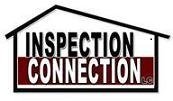Green living in 2009 - Suffering no long required July 2009
Kermit the frog had it right
Remember the “good ol’ days?”In decades past, folks that wanted to save energy and resources when building or buying a home knew that they would have to give up some comforts to be “green.”Thermostats were set at 85 in the summer and 60 in the winter because utilities were expensive and heating and air- conditioning systems were as energy efficient as a ’73 Ranchero. Cinderblock and two-by-four framed walls had the insulating value of an aluminum flagpole, but you could keep warm by shuttling wood and roasting wieners in front of the fireplace – until you ran for the electric blanket.Adventurous types built their own efficient homes. To learn the secrets of green technology they had to trek to the mountains above Taos and pay homage to a grizzled retired Los Alamos engineer who had gone native and was more comfortable sharing his building science secrets with the raccoons and coyotes than with some undeserving suburban neophyte.Early adopters of green technology installed a solar collector system to help out that great electric water heater from the electric company. When the installation was complete, with enough pipes, pumps, dials and valves to startle a WWII submarine sailor, you knew you would have to hire a full-time boiler mechanic just to keep the thing percolating.We all love the water-saving fixtures of the past. Nothing says green living like jumping from one needle sized spray to another in an effort to rinse out the last bit of Prell.Kermit had it right – it was not easy being green!
Progress is a wonderful thing
Today, mainstreaming of efficient and sustainable building technologies has taken the suffering out of going green. Homes built to meet today’s green program standards are affordable, healthy and more comfortable than ever.Advanced home envelope insulation, wall systems and windows combine mega Rvalues with tight construction to reduce the need for large and inefficient heating and cooling systems. Refrigerated central air-conditioning systems are available with Seasonal Energy Efficiency Ratings (SEER) twice as high as those available just a few years ago, and they utilize environmentally friendly refrigerants. The result is reduced utility dollars wherever you set your thermostat.The improved tightness of green and efficient program homes and heating and air conditioning ductwork also improves the indoor-air quality. Fresh air ventilation is supplied to the home through dedicated duct work, sealing out contaminants. High-efficiency sealed combustion furnaces, water heaters and filtration as well as low VOC (Volatile Organic Compound) paints, flooring and engineered cabinetry and structural components further diminish household contaminants to improve healthy living.A progressive group of builders in Las Cruces has worked hard in recent years to adopt new energy efficient and green technologies and are providing these green program homes in price ranges to fit most any homebuyer’s budget. The EPA’s Energy Star program, Department of Energy’s Build America Challenge, Build Green New Mexico and U.S. Green Building Council Leadership in Energy and Environmental Design for Homes all work to insure that the homes meeting their program standards are healthy, efficient, affordable and durable. Sizable tax credits are available to buyers of new homes certified under some of these programs.
Solar is simple!
Solar water heating and solar photovoltaic power generating systems no longer require a degreed engineer to keep them in working order. Today’s systems are turnkey with “set it and forget it” technology. The recent increase in the number of solar equipment dealers in Las Cruces and the variety and efficiency of equipment choices have reducedthe price of installed systems while federal and state tax credits will pay for up to 40 percent of the total installed costs. El Paso Electric has further sweetened the solar pot with agreements to purchase excess power generated from these systems.
No water wasted
In our Chihuahuan Desert climate water is and always will be precious.Fortunately, we have a vast number of ways to limit water use around our homes while keeping our properties clean and attractive. New low-flow fixtures (even shower heads!) are more user friendly than ever thanks to aeration technology. Dual-flush toilets and grey water reclamation systems that reuse non-potable water allow water to do twice the work before it goes down the drain.New direct-plumbing distribution and re-circulating systems mean it takes less time for hot water to reach fixtures so less water goes to the drain.The biggest gains in environmental water quality improvement and savings come outside the home. Green program homes are often designed to manage water more from precipitation on site, which limits storm water pollution and improves aquifer regeneration. Smart landscaping incorporates the use of water-thrifty native plants and takes advantage of reduced evapo-transpiration through drip irrigation and similar technologies. Water harvesting for landscape irrigation or household use makes sense in ours or any climate.Take a look at what is available in today’s green program homes and let someone else do the suffering For more information on green program homes you can visit the websites below.
Miles Dyson is the owner of Inspection Connection LC - Professional Home Energy Rating and Home Inspection Services. For more information visit: https://www.InspectionConnectionTexas.com.
